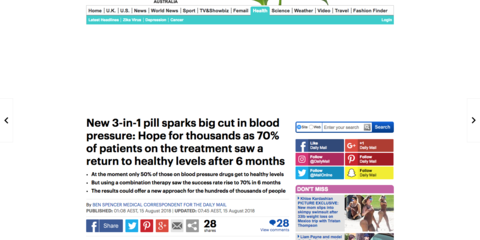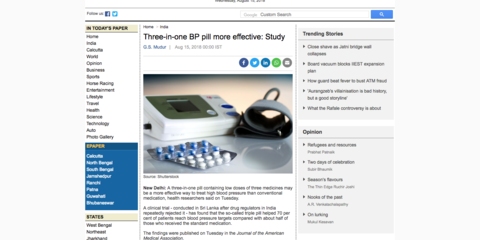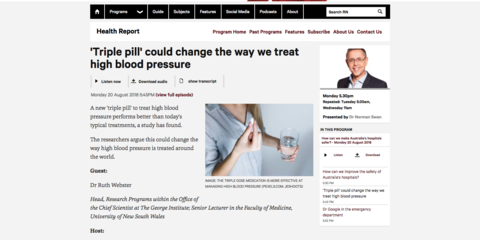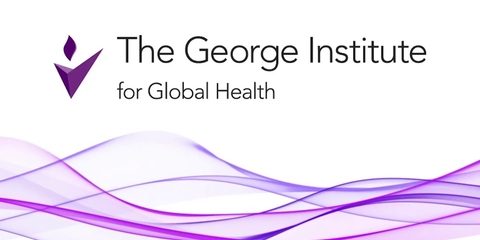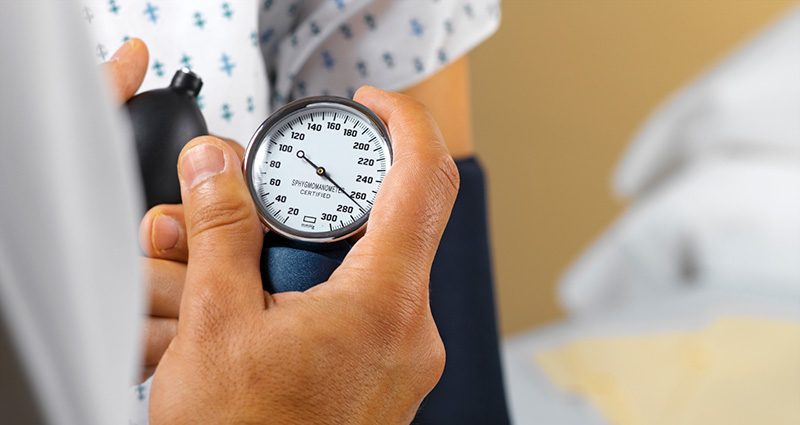
Innovative triple pill significantly lowers blood pressure, study finds
A new low dose three-in-one pill to treat hypertension could transform the way high blood pressure is treated around the world.
A trial led by The George Institute for Global Health revealed that seven out of ten subjects treated with the ‘Triple Pill’ reached blood pressure targets, compared to just about half receiving normal care.
Since high blood pressure is the leading risk factor for disease burden worldwide, the findings published in JAMA will likely prompt call for changes in treatment guidelines.
Dr Ruth Webster, of The George Institute for Global Health, said this was a major advance by showing that the Triple Pill was not only more effective than standard care, it was also safe. “More than a billion people globally suffer from high blood pressure with the vast majority having poorly controlled blood pressure. Our results could help millions of people globally reduce their blood pressure and reduce their risk of heart attack, stroke and kidney disease.”
This innovative pill contains three drugs, each at half dose for early treatment of high blood pressure. Traditionally, patients begin treatment with one drug at a very low dose, which is increased over time with additional drugs added and increased in dosage to try to reach target.
Dr Webster added: “Patients are brought back at frequent intervals to see if they are meeting their targets. This requires multiple visits to tailor dosage and add more drugs. This is not only time inefficient, it’s costly. We also know that many doctors and patients find it too complicated and often don’t stick to the process. This new approach is simpler and it works.”
The trial, which was conducted in Sri Lanka, enrolled 700 patients with an average age of 56 and blood pressure of 154/90 mm Hg.
Patients were randomly assigned to receive either the combination pill or usual care – their doctor’s choice of blood pressure lowering medication. The Triple Pill, consisted of the commonly used blood pressure medications telmisartan (20 mg), amlodipine (2.5 mg), and chlorthalidone (12.5 mg).
Compared with patients receiving usual care, a significantly higher proportion of patients receiving the Triple Pill achieved their target blood pressure of 140/90 or less (with lower targets of 130/80 for patients with diabetes or chronic kidney disease).
At six months, 83 percent of participants in the Triple Pill group were still receiving the combination pill compared to the majority of patients in the usual-care group receiving one and only one third receiving two or more blood-pressure–lowering drugs.
Prof. Vivekanand Jha, Executive Director of the George Institute for Global Health India, said “About 20 crore people have raised blood pressure in India. Many of these, especially in the rural areas, do not know that they have raised blood pressure. Even when they get to know this and start treatment, a large proportion discontinue because of the need for repeat doctor visits and cost.”
The results of this study shows that blood pressure control can be achieved with one pill can rather than a series of medicines. This can be prescribed in primary care, will ensure better adherence to treatment and thereby save large number of lives, he added.
Professor Anushka Patel, Principal Investigator of the trial and Chief Scientist at The George Institute, said this was big improvement. “The World Heart Federation has set an ambitious goal that by 2025 there will be a 25 per cent reduction in blood pressure levels globally. The Triple Pill could be a low-cost and safe way of helping countries around the world to meet this target.
The George Institute is now developing strategies to maximise uptake of the study results. This includes examining the acceptability of the Triple Pill approach to patients and their doctors, as well as conducting cost-effectiveness analyses which will be shared with governments and other payers.
The study was funded by the National Health and Medical Research Council of Australia as part of the Global Alliance for Chronic Disease.





